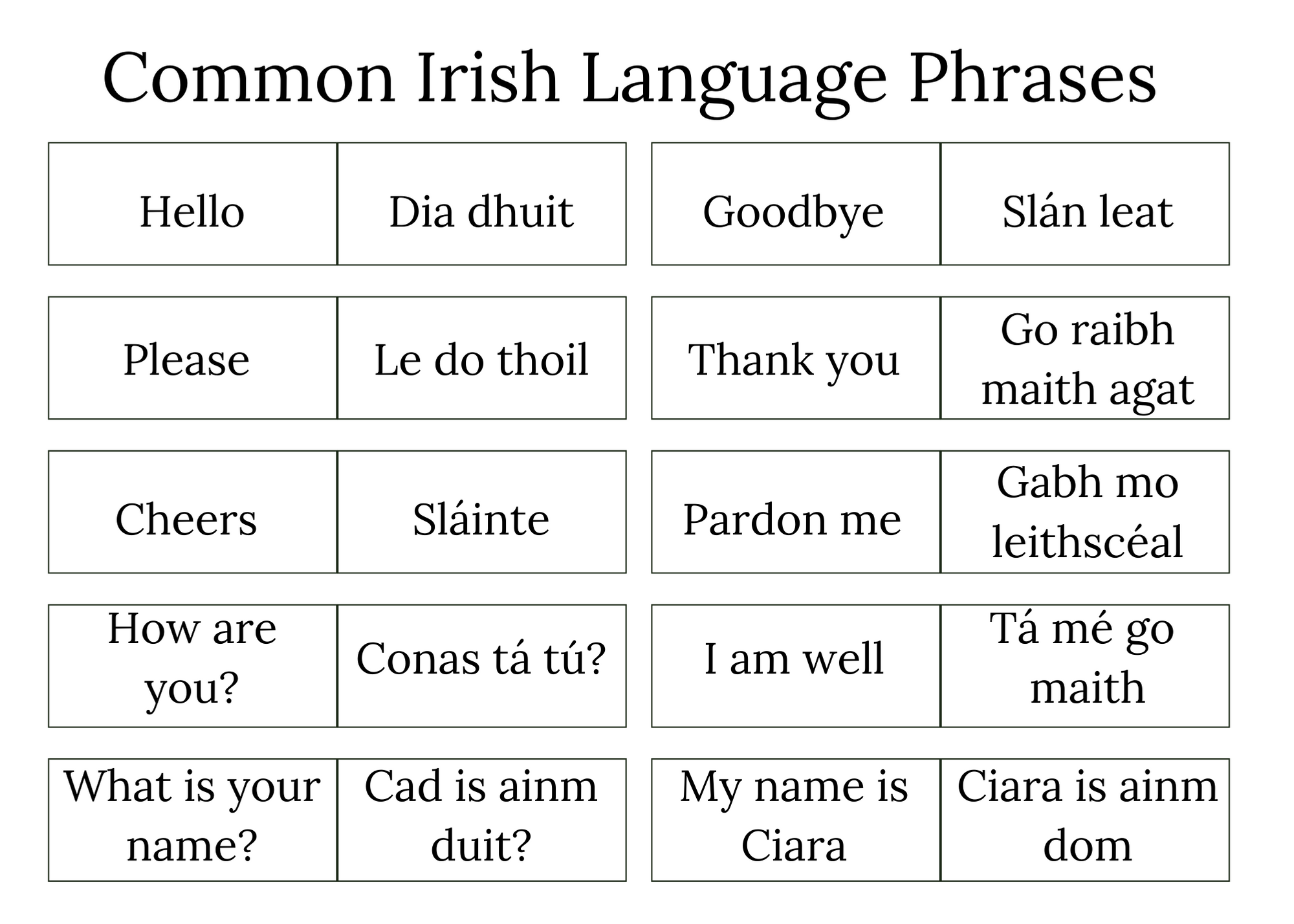Irish Language
A Brief History of the Irish Language:
Irish is a Celtic language, as is Scottish Gaelic, Manx Gaelic (Manx), Welsh, Breton, and Cornish. The Gaelic languages come from Old Irish and the other three Celtic languages come from British. There were other Celtic languages spoken on the European Mainland, but they died out around 1,500 years ago. The Celtic languages are believed to have come from Common Celtic, which came from Indo-European itself.
We cannot be certain when Irish first came to Ireland, but many scholars believe that it was here over 2,500 years ago. It is certain that there were other languages spoken here before Irish but, by the start of the Christian era, Irish was spoken all over Ireland and was spreading through Scotland, the west coast of Britain and the Isle of Mann. The Romans called the Gaels Scotti and they eventually spread the Gaelic language throughout most of Scotland.
The oldest remains of Ancient Irish that we have are inscriptions on Ogham stones from the 5th and 6th centuries. Old Irish was first written in the Roman alphabet before the beginning of the 7th century which makes Irish the oldest written vernacular language north of the Alps.
During the Middle Irish period (900-1200 AD) some loanwords came from the Scandinavian language, words like ‘pingin’ (penny), and ‘margadh’ (market), but Scandinavian had little effect on the syntax of the Irish language. This was a period of strife and conflict but, despite that, the Gaelic literary culture never failed and there are many manuscripts that survived from the Middle Irish era.
The Anglo Normans began settling in Scotland at the end of the eleventh century and in Ireland in the last third of the twelfth century. The Anglo Norman conquest started a period of multilingualism in Ireland, but Irish remained in the ascendancy and, gradually, the Normans began to speak Irish. By the start of the sixteenth century most of the people of Ireland were Irish speakers again. Among the words that the Anglo Normans introduced into Irish are ‘giúistís’ (justice), ‘bardas’ (corporation), ‘cúirt’ (court), ‘garsún’ (boy), and many, many more.
1200-1600 are the dates of Classical Modern Irish. This was not the ordinary speech of the period but a cultivated standardized language developed in the lay schools for scholars and poets throughout Ireland and Scotland. The spoken language of the same period is called Early Modern Irish, but the speech of the people underwent many changes from the start to the end of this period. Although the majority of the people had Irish, English, however, was necessary for administrative and legal affairs. Irish, therefore, never became an administrative language, and the Irish speaking community never achieved political independence again.
The status of Irish as a major language was lost. But Irish continued as the language of the greater part of the rural population and, for a time, of the working classes in towns. From the middle of the eighteenth century, as the penal laws were relaxed, and a greater social and economic mobility became possible for the native Irish, the more prosperous members of the Irish-speaking community began to adopt an Anglicized way of life and to take up English. This increased during and after the Great Famine (1846–1848). The language was on the point of extinction.
At the start of the eighteenth century scholars started to become interested in the language and in its literature. Many people understood that Spoken Irish was declining. Thomas Davis, in 1843, was among those who publicly declared that Irish is a “national language”. This terminology was again used in the constitutions of 1922 and 1937. The Society for the Preservation of the Irish Language, which was established in 1876, managed to gain recognition for Irish at every level of the education system from primary school level to university. In the year 1893 Dubhghlas de hÍde, Eoin Mac Néill, Father Eoghan Ó Gramhnaigh and others established Conradh na Gaeilge, or the Gaelic League. Within a couple of years they managed to create a mass movement of support for the Irish language. A start was made to bringing the grammar of the written language into line with the spoken modern language. A result of these efforts was the Official Standard which the Government of Ireland published in 1958.
The image of the Irish language has changed a great deal in recent years, which is evident by the number of people who speak and learn the language, not only in Ireland but around the world. Figures from the 2016 Census, show that 1.76 million people in Ireland (about 39.8 percent of the population) claim to speak Irish, however, only about 4.2 percent of the population used it daily outside of the education system. Despite these figures, recent surveys have long shown a deep affection towards the Irish language, so hopefully it will continue to gain strength with future generations.
Learn more at Conradh na Gaeilge.
Interested in learning the Irish language? Sign up for classes at
Gerry Tobin Irish Language School.
Back to Arts and Culture.

